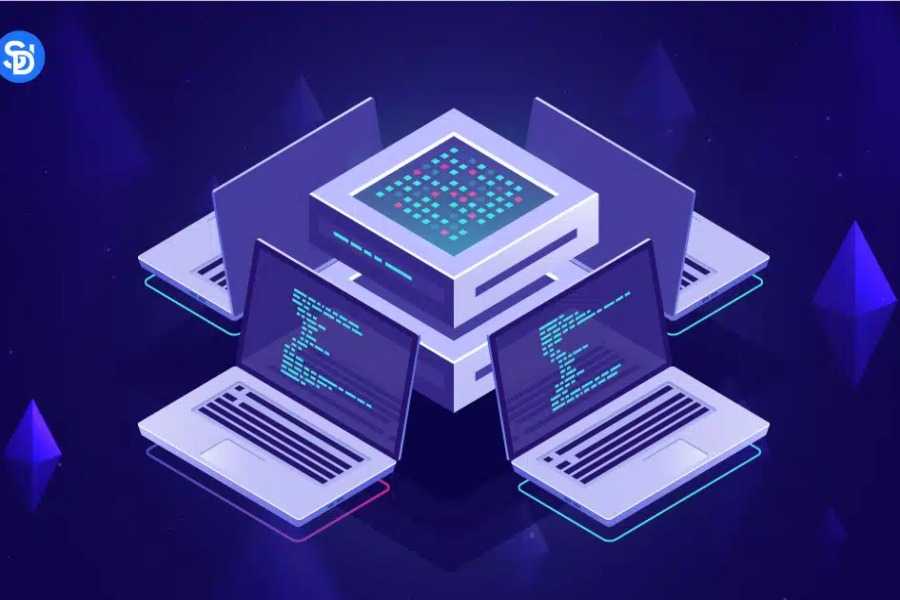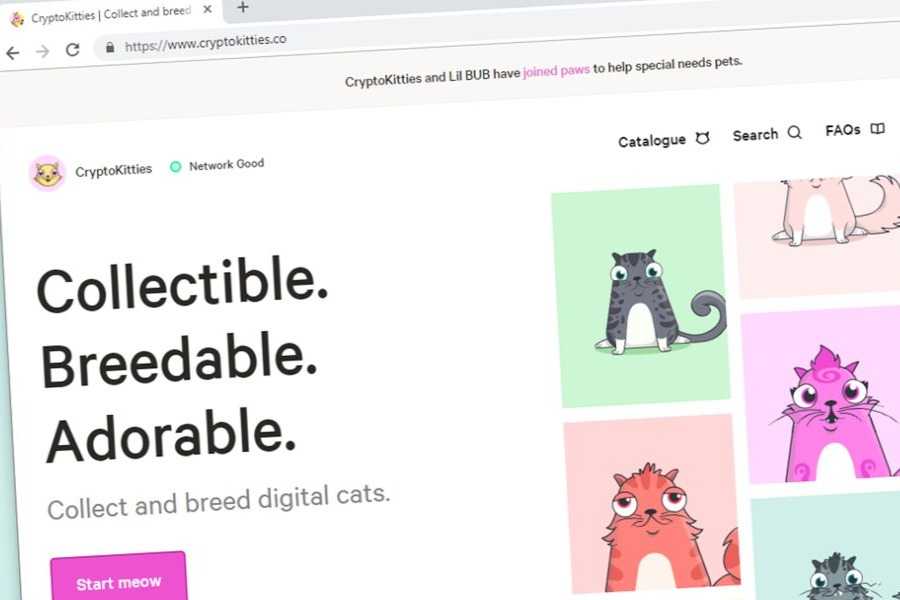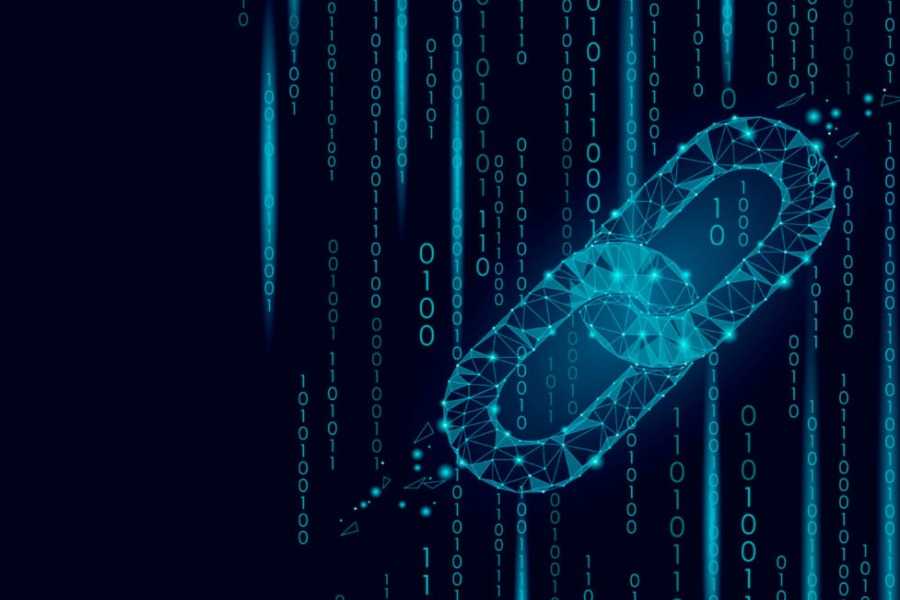
What Are Blockchain Applications?

Table Of Contents
What Are Blockchain Applications(or AKA Decentralized Applications - DApps)?
Blockchain technology, the revolutionary technology behind cryptocurrencies like Bitcoin and Ethereum, is not just about digital currencies. It’s a groundbreaking technology with the potential to transform the way we interact with digital applications.
This transformation is brought about by Decentralized Applications (DApps), a new class of applications that operate on a blockchain network rather than a centralized server.
Unpacking Decentralized Applications (DApps)

At a glance, DApps might seem similar to the applications we use daily, like Facebook, Instagram, Gmail, and YouTube. However, there’s a fundamental difference. Instead of reporting back to a centralized server like Facebook or Google, DApps report back to the blockchain.
This means that you’re interacting directly with the blockchain through the application, making these applications censorship-resistant, open-source, and guaranteed to execute as long as a single node exists on the network.
DApps can only be built on smart contract networks, such as Ethereum. Smart contracts are pieces of code that make up a program so that it can be run to do more complicated things.
They allow two people to make an agreement written in code, eliminating the need for a third party. This open-source nature of DApps allows for greater trust as anyone can look at the code and see how it works.
The Unique Benefits of DApps

DApps offer several unique benefits over traditional applications. They are censorship-resistant, meaning they don’t have to answer to governments, corporations, or specific people. If the smart contract is coded to do something and it’s triggered, nobody can stop it. This is particularly important for financial applications, ensuring that nobody can control your money.
Another significant benefit of DApps is that they will essentially never go offline. Since DApps run on the blockchain, they are run by hundreds of thousands of computers all around the world. It would be infeasible to turn them all off, making DApps more reliable than traditional applications.
Real-world Examples of DApps

There are many examples of DApps in various sectors.
Finance: Platforms like Aave and Compound allow users to lend and borrow cryptocurrencies. Users can deposit their Ethereum or Matic tokens to certain smart contracts and earn interest on them. Users can also borrow tokens if they have enough collateral already deposited.
Gaming: DApps like CryptoKitties and Decentraland have revolutionized the gaming industry. In CryptoKitties, users can buy, collect, and breed virtual kittens. These kittens are represented by NFTs (Non-Fungible Tokens), and older generation kittens are usually the most valuable. Decentraland, on the other hand, is a virtual reality platform powered by the Ethereum blockchain, where users can create, experience, and monetize content and applications.
Marketplaces: DApps like Rarible and OpenSea have created decentralized marketplaces for NFT art. These platforms facilitate the process and allow interaction with the blockchain, making it easy for everyday people to use.
Social Media: DApps like Steemit and DTube are blockchain-based social media platforms where users can earn cryptocurrency for creating and curating content. They are alternatives to traditional social media platforms like Facebook and YouTube, offering a new way for content creators to monetize their work.
The Future of DApps: A New Era of Digital Interactions

The future of DApps is exciting. They offer new opportunities for entrepreneurs and developers, allowing them to raise funding earlier and often more than through traditional means. With the advent of Decentralized Autonomous Organizations (DAOs), the way companies are run is also transformed. DAOs replace the traditional board of directors and organizational chart, allowing token holders to contribute to the company’s roadmap.
In the future, we can expect to see more DApps in various sectors. For instance, in the healthcare sector, DApps could be used to create decentralized patient records, improving data security and patient privacy. In the supply chain industry, DApps could provide transparent and tamper-proof tracking of goods, increasing trust and efficiency.
Moreover, the integration of DApps with emerging technologies like artificial intelligence and the Internet of Things could open up new possibilities. For example, smart devices could interact directly with DApps, automating transactions and improving efficiency.
The Impact of DApps on Startups and Entrepreneurs

The advent of DApps has significantly impacted the startup ecosystem. Traditionally, tech startups would build their product, deploy it, and then seek venture capital (VC) funding. If the VCs liked the product and the idea, the startup would receive funding. This model is being turned on its head with the rise of DApps and blockchain technology.
In the new Web 3.0 era, startups can build their technology, release tokens to the public or to funds like VCs, and start raising money for their DApp from day one. This approach transforms the way companies are run, with the formation of Decentralized Autonomous Organizations (DAOs) replacing the traditional board of directors and organizational chart. DAOs allow token holders to contribute to the company’s roadmap, aligning everyone’s incentives. If the application does well, the token price will go up, increasing its value.
This new model of fundraising has already led to some impressive results. For instance, Filecoin, a decentralized storage network, raised $257 million in its initial coin offering (ICO), dwarfing the $6 million raised by Dropbox, a centralized competitor, in its Series A funding round.
In conclusion, DApps are set to revolutionize the way we interact with digital applications. They offer numerous benefits over traditional applications, including censorship resistance, guaranteed execution, and the potential for never going offline. As we move forward, the potential for DApps is vast, promising a future where digital interactions are more transparent, secure, and user-centric.
DApps: A Great Equalizer

One of the most significant benefits of Web 3.0 and DApps is pseudonymity. This means that individuals can be identified by a handle or username, preserving their privacy.
This feature is a great equalizer as it allows individuals to be recognized for their contributions, regardless of their age, race, or gender. For example, teenagers have created successful Decentralized Finance (DeFi) projects, raising funding and gaining recognition for their work.
Choosing the Right Blockchain for DApps

When it comes to building DApps, choosing the right blockchain is crucial. Ethereum is currently the most popular choice due to its smart contract capabilities.
However, Ethereum has its limitations, including high costs for computation and storage. This is where alternatives like the Internet Computer come in, offering a scalable cloud computer that runs on a blockchain.
Wrapping Up
In conclusion, DApps are set to revolutionize the way we interact with digital applications. They offer numerous benefits over traditional applications, including censorship resistance, guaranteed execution, and the potential for never going offline.
As we move forward, the potential for DApps is vast, promising a future where digital interactions are more transparent, secure, and user-centric.
Tags
Share
Related Posts




Quick Links
Legal Stuff

